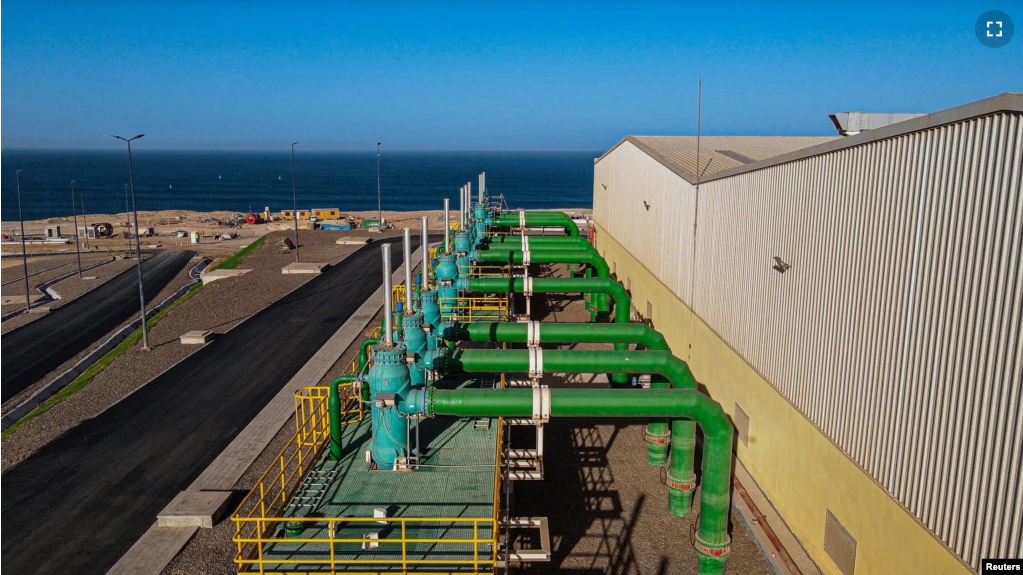People in Agadir, Morocco, see their new desalination plant as a way to deal with years of too little rain. Dry winters have led to reduced water supplies for homes and agriculture. But plans to expand the country’s desalination program may depend on efforts to power it with forms of renewable energy.
Water problems
Smaller desalination plants have been operating in Morocco for years. But, the one that started working in Agadir this summer is by far the biggest. It is also the first plant of its kind meant to deal with reduced rainfall.
Rachid Boukhenfer is a local official. He said, “…without desalination Agadir could not have found enough water to drink and we would have had longer, worse cuts in supply.”
That early statement about the plant’s effectiveness comes as the government plans 12 additional desalination plants. It is part of an expected investment in $12 billion in water projects from 2020 to 2027.
The new plants will join nine smaller ones already operating. The new ones are supposed to open by 2035, the state water and electricity utility ONEE said in an email.
Morocco now depends on surface and underground water for nearly all its freshwater use. Most of it comes from a group of 149 dams.
Five years of very little rain, or drought, have left many of the water supplies reduced. Agriculture Minister Mohammed Sadiki recently told parliament most water would be taken from irrigation to supply drinking water.
Rainfall is often the biggest issue affecting Moroccan economic growth rates. This year, the cereals harvest was two-thirds smaller than in 2021 and milk output down by 30 percent from the year before.
“I’m not even sure I will sow wheat this year because the rainfall has been so late,” said Zakaria Khatabi, a farmer in Zhiliga, north of Rabat.

Renewable energy is an issue
The 12 new desalination plants planned or under way should reduce dependence on surface and groundwater from 97 percent to 80 percent by 2035, ONEE said.
Building on the most important plant is to start next year. It will supply Morocco’s biggest city Casablanca. The plant could start operations in 2026.
However, Morocco depends on imported fuels, such as oil and gas, for most of its power production. Costs for those fuels have added to the country’s trade deficit.
Energy represents 45 percent of the total cost of desalination, ONEE head Abderrahim El Hafidi said.
Morocco wants to increase renewables as a share of its total power output to 52 percent by 2030 from 20 percent now. The goal is to reduce dependence on imports and lower electricity costs.
All the new desalination plants, including Agadir, were meant to be powered by renewable energy. But, the Agadir plant is so far being powered directly from the national power supplies.
Reuters reports that a person close to the project said the government is considering an offer for a renewable energy plant. The deal would power the Agadir desalination center in an effort to reduce the cost of water.
I’m John Russell.
Ahmed Eljechtimi reported on this story for Reuters. John Russell adapted it for VOA Learning English.
_________________________________________________________________
Words in This Story
desalinate – v. to remove salt from (something, such as water)
freshwater – n. of, relating to, or living in water that is not salty
irrigate – v. to supply (something, such as land) with water by using artificial means (such as pipes)
cereal – n. a plant (such as a grass) that produces grain that can be eaten
sow – v. to plant seeds in an area of ground
